
Susy Paisley and the spectacled bear
Newton Paisley fabrics tell true stories of unconsidered animals and plants struggling to survive the plunder and wreckage of their habitat. For each metre designer Susy Paisley sells, she donates enough money to preserve 100 square metres of wild habitat through the World Land Trust.
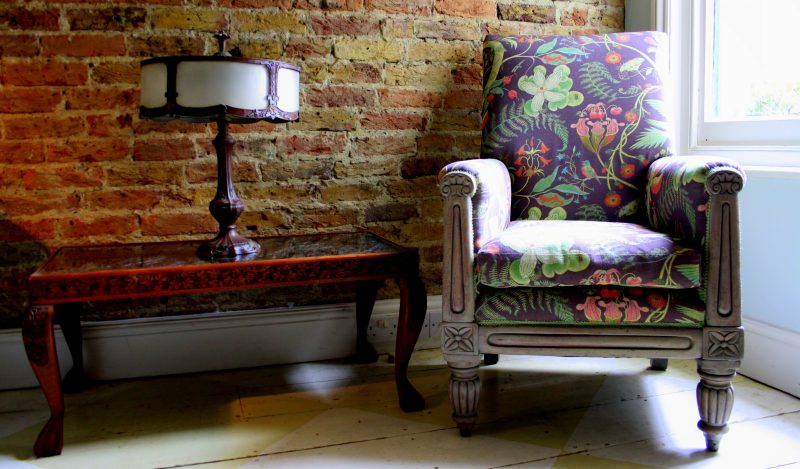
Armchair upholstered in the Carolina Tree of Life Collection
The launch of Newton Paisley Fabrics at Decorex, the influential design show, last September drew together all the threads in Susy’s life: the academic achievement in conservation, the years spent often alone in the Bolivian Madidi cloud forest studying the endangered Andean spectacled bear, the proclivity to draw in detail the plants and animals surrounding her, a family background in Scottish tweed and American textile mills. Newton is her mother’s family name, and Paisley, her father’s – the scientist and the fabric.
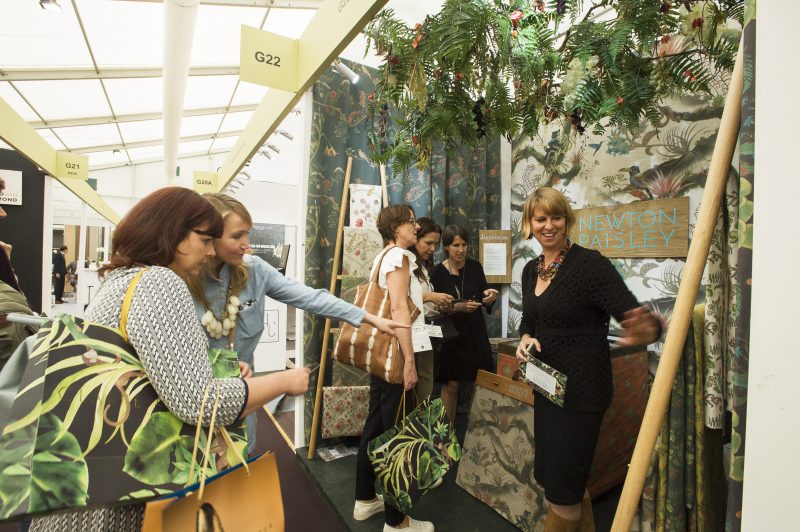
Newton Paisley: a highlight of London Design Week
She is that rare thing – an artistic scientist, a scientific artist. Susy has a PhD in Conservation Biology, won the 2016 Design Award from Kent Creative Arts and her fabrics were mentioned in Homes and Gardens‘ 50 highlights of London Design Week. ‘I’ve always loved textiles – I’m an ardent reader of World of Interiors, but it winds me up to see stylized birds and flowers used in designs. I’ve drawn illustrations for scientific journals and always draw what I see in field research – real animals, birds and plants, and I use these in my designs.’ The Durrell Institute of Conservation and Ecology at the University of Kent brought Susy to Kent but when her two children were born, she realised that scooting off for months on end to the cloud forests of Bolivia was no longer an option. ‘I had to get out of academia because it wasn’t fitting in with family life so I threw everything I loved into the pot’ – and the seed of Newton Paisley germinated.
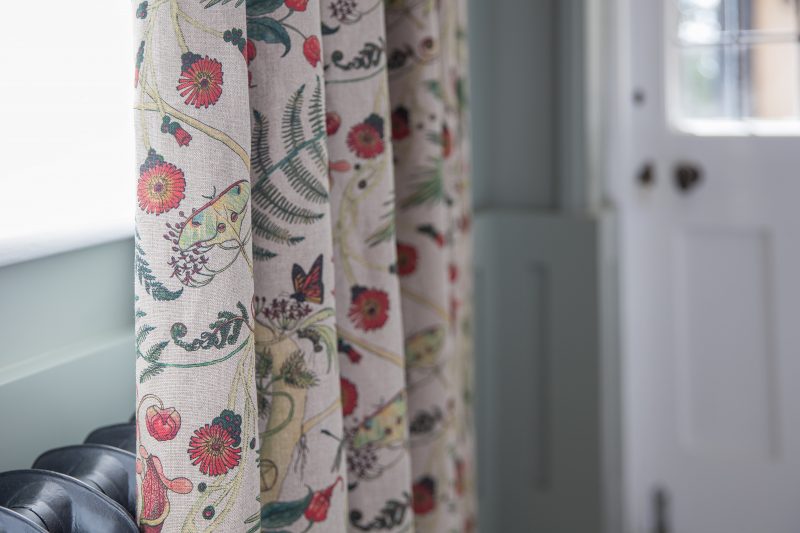
Fabrics are available in scoured linen which gives soft colours
Susy grew up in North Carolina in the United States from the age of six, the only child of an artistic mother and a father passionate about ornithology. Her American education and interdisciplinary studies meant she never felt constrained to identify herself either as an artist or a scientist. She majored in biology, ‘an inspiring teacher’, and then went on to do a masters on natural resource use in Mexico. A PHD followed and Susy’s life in the Madidi National Park, studying the Andean spectacled bear – a creature surrounded by myth and legend, loved by us as the model for Paddington, detested by local people who claimed the bear ate their crops and killed livestock.
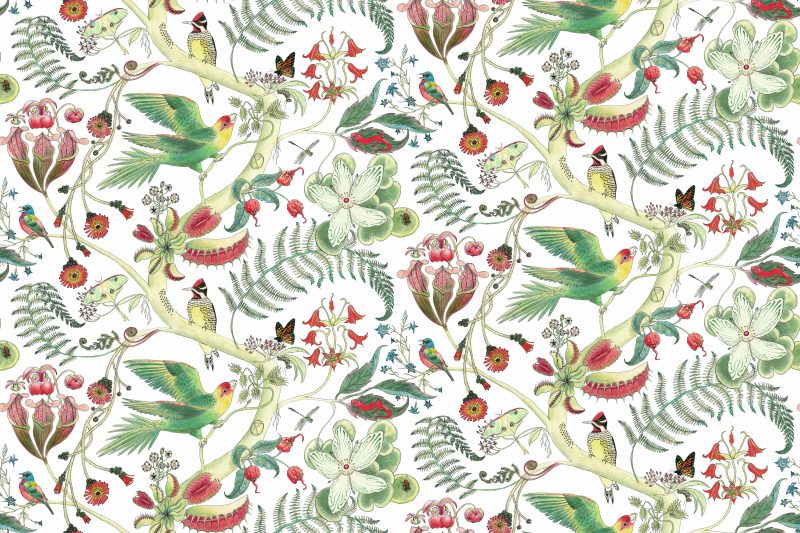
Bleached linen brings out the brilliance of the pigment-printed colour
Susy has brought this knowledge and discipline into the design of her fabrics. ‘I’m influenced by the tradition of old tapestries which were used for storytelling.’ There’s a narrative in Susy’s collections and each fabric has a ‘field guide’.
The Madidi Clouds Collection was created from Susy’s drawings of her surroundings and research for her PHD in Bolivia. A spectacled bear, reclining on a mossy branch surrounded by epiphytic plants and flowers in glowing oranges, pinks and blues, gazes thoughtfully at a Great Sapphirewing.

Madidi Clouds inspired by Susy’s research in Bolivia
The Carolina Tree of Life collection is illustrated with the flora and fauna of Susy’s childhood. It tells the story of the migratory Monarch butterfly, facing a battle for survival as supplies of its larval foodplant, milkweed, dwindles. The Carolina parakeet, tragically now extinct, extends its brilliant wings – a message to us of the extraordinary beauty that is lost forever by carelessness. Handsomely-sinister carnivorous pitcher plants open red-veined mouths on ‘Carolina Posies’ and, on ‘Carolina Monarch’, Monarch butterflies flit amongst echinacea purpurea and echinacea laevitiga, a coneflower indigenous and unique to the Carolinas, milkweed and unfurling ferns.
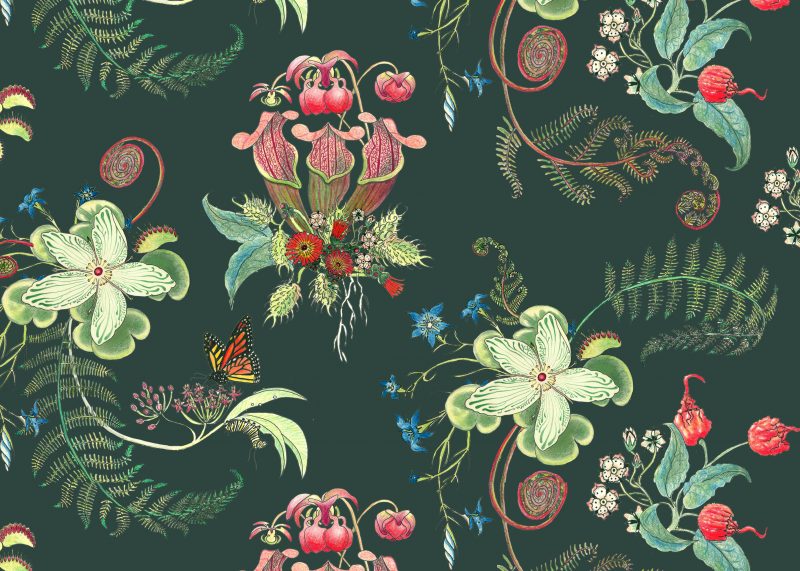
The flora and fauna of Susy Paisley’s North Carolina childhood in Carolina Posies
The English Mercia Collection is a tribute to The Lorax by Dr Seuss which Susy describes as ‘One of the greatest conservation parables ever written’. Seuss’s fabulous technicolour characters are represented by real English species, great crested newts, red squirrels set in the ancient woodland of England – an endangered habitat.
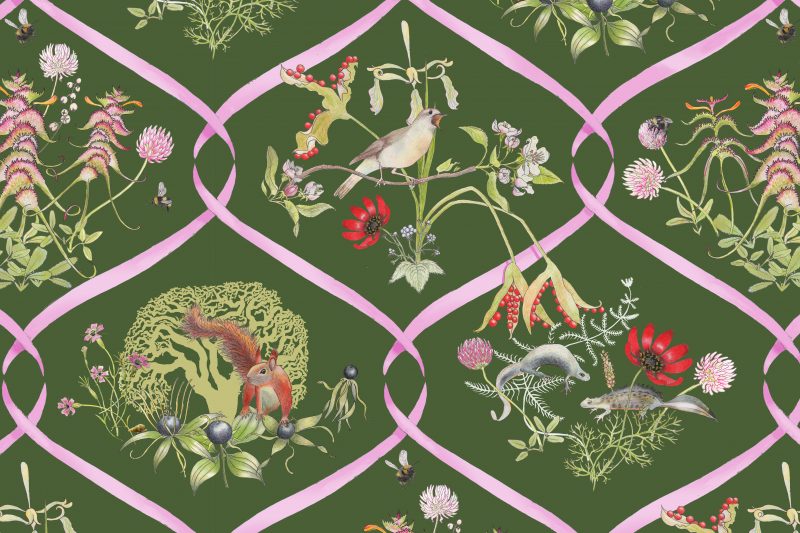
The creatures and plants of the ancient woodland of Britain in Mercia Ribbons
Newton Paisley fabrics tell us Susy’s passion for the beauty and singularity of the things in this world and the importance of looking after them. Designed with colour and flow as expert as a chintz from Zoffany or Colefax, they are nevertheless studied botanical and biological drawings.
Despite the global reach of her work, Susy aims to keep the production of her fabrics as local and eco-friendly as possible and has avidly researched the means. She uses only linen, whose production is more eco-friendly than cotton, which is produced in mills in England and Scotland. She uses a natural scoured linen which produces a fabric of muted soft colours, and bleached linen which brings out the brilliance. ‘I’ve loved learning how linen grows. 80 per cent of the best long-staple linen comes from Northern France and Belgium which is very local to us in Kent. There’s been a lot of cross-pollination. The Huguenots brought their expertise in textiles to Britain.’ The designs are made with pigment-printing instead of reactive printing: ‘It’s a very clean, low-carbon process needing little water or fixatives.’

A field of flax: Newton Paisley uses linen because it is eco-friendly and relatively local
When Susy and Faversham Life met on the Kent Creative Arts radio show, I asked her why she had chosen to explore her creative talents on fabric rather than illustrations. She said that she didn’t like to see nature imprisoned behind glass and separated. ‘We are embedded in the fabric of life and we depend upon it. I want people to interact with my designs, live with them and touch them.’
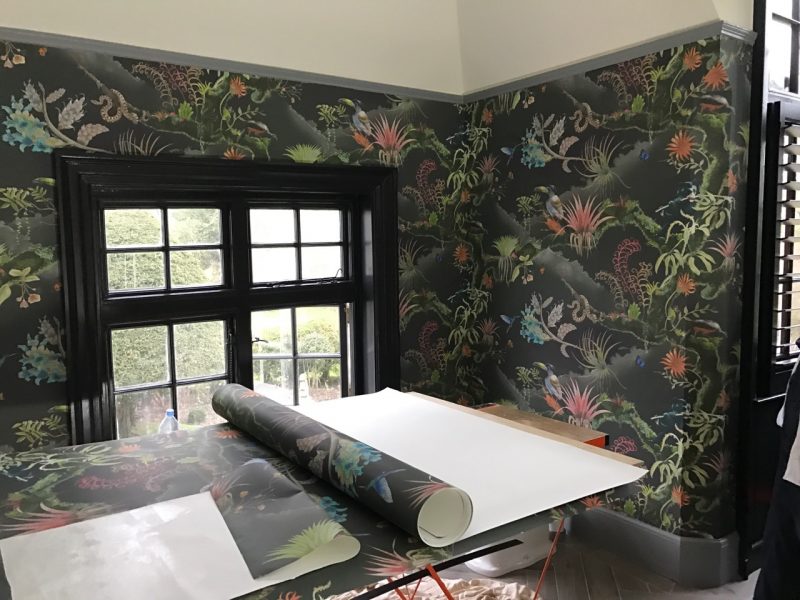
Newton Paisley is adding a range of wallpapers
At her house in Whitstable, Susy’s inherited passion for fabric is evident everywhere: the cushion embroidered by an aunt who studied textiles at City and Guilds, a lace curtain made by a cousin, fabric collected by Susy in her travels in South America. The chimney breast is adorned with biological drawings of animals: octopus tentacles squirl around the mantelpiece and at the top in the centre, the spectacled bear.
Much more is coming from Newton Paisley. Susy is developing a collection based on the extraordinary spiny forest in Madagascar: ‘There’ll be bright blues, spiny shapes, birds and lemurs. The story will be of animals that want to eat plants, and plants that evolve to defend themselves from being eaten. I’ll be looking at the remarkable symbiotic relationships between plants and ants and termites, hosted by the plants, who bite the animals who try to eat the plants.’ She is working on a Paisley design (of course) created from the shapes of unicellular organisms from healthy pondlife. Newton Paisley already sells a range of cushions and is moving into lampshades and wallpaper. The very groovy Pig boutique hotels have Newton Paisley curtains in their bedrooms.
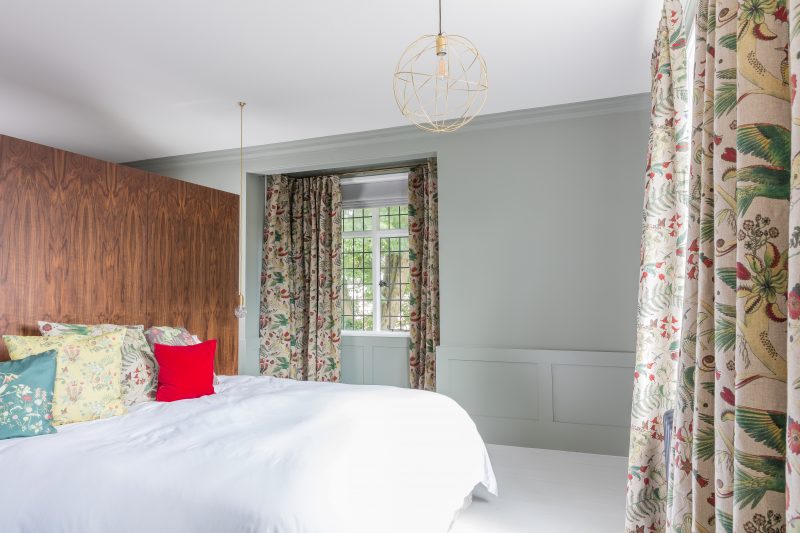
‘A repeated pattern is relaxing to the psyche’
When I spoke to her, she was working on a tribute to David Attenborough featuring his 10 favourite species which include the mysterious Olm, an acquatic salamander who lives in dark caves and can go for 10 years without eating, the Sumatran rhino and the Solenodon, a shrew-like creature with a turned-up nose and poisonous bite.
Last year, Susy designed a fabulous silk scarf to mourn the death of the last living Rabb’s Fringe-Limbed Tree Frog. He was called Toughie and he died at Atlanta Botanical Garden on 26 September 2016. The Latin name of this Panamanian frog was Ecnomiohyas rabborum (Ecnomiohyla deriving from the Greek ‘ecnomios’ meaning remarkable and rare, and ‘Hylas’, the companion of Hercules). With its giant finger pads, skin flaps and extended flat humerus, the frog could fly and change colour to merge in to whatever it landed on. The tadpoles were nurtured by exfoliating the parent, nibbling at its skin. Susy says: ‘Amphibian populations are being threatened everywhere by the infectious disease chytridiomycosis, and climate change so I made this scarf to raise money for the Amphibian Survival Alliance.’ In blush pink and duck-egg blue colourways, the scarf is available on the Newton Paisley website.
Text: Posy. Photographs: Newton Paisley